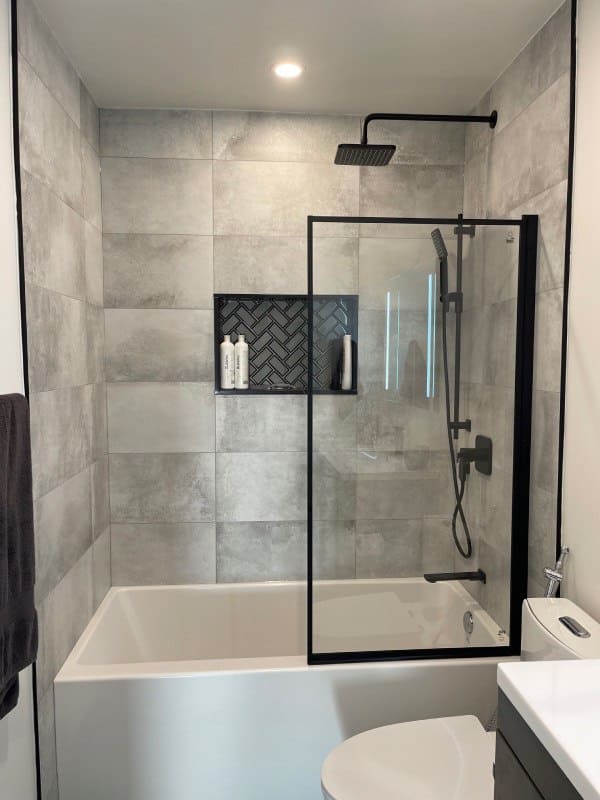Bathroom remodeling and renovation projects offer homeowners the opportunity to revamp their living spaces, enhance functionality, and increase property value. One key aspect of these projects is installing a new bathroom sink. While it may seem like a straightforward task, there are several important considerations to keep in mind to ensure the process goes smoothly and the end result meets your expectations. In this article, we’ll explore seven crucial factors to consider before embarking on a bathroom sink installation project during remodeling or renovation.
Budgeting Wisely
Before diving into any remodeling project, it’s essential to establish a realistic budget. Consider all the expenses associated with installing a new bathroom sink, including the cost of the sink itself, plumbing fixtures, labor, and any additional materials required. Set aside a contingency fund for unexpected expenses that may arise during the renovation process. By budgeting wisely, you can avoid overspending and ensure that your project stays on track financially.
Assessing Space and Layout
Evaluate the available space in your bathroom and determine the most suitable layout for your new sink. Consider factors such as the size of the sink, its placement within the room, and how it will complement other fixtures and features. Take accurate measurements to ensure that the sink will fit seamlessly into the designated area without overcrowding or obstructing movement within the space. Pay attention to plumbing requirements and ensure that there is adequate space for piping and drainage.
Choosing the Right Sink
With a wide range of sink styles, materials, and designs available, choosing the right one can be overwhelming. Consider your aesthetic preferences, functional needs, and budget when selecting a sink for your bathroom remodel. Popular options include pedestal sinks, wall-mounted sinks, undermount sinks, and vessel sinks. Additionally, consider factors such as durability, ease of maintenance, and compatibility with your existing bathroom decor.

Plumbing Considerations
Proper plumbing is essential for the functionality and longevity of your new bathroom sink. If you’re replacing an existing sink, evaluate the condition of the existing plumbing fixtures and determine if any repairs or upgrades are needed. Hire a licensed plumber to handle the installation process, especially if significant plumbing work is required. Ensure that the plumbing meets local building codes and regulations to avoid potential issues down the line.
Ventilation and Moisture Control
Bathrooms are prone to high levels of moisture, which can lead to mold, mildew, and structural damage if not properly controlled. When installing a new sink, consider ventilation options to promote airflow and reduce humidity levels in the room. Install an exhaust fan if necessary to help remove moisture from the air and prevent condensation buildup. Additionally, choose moisture-resistant materials for your sink and surrounding fixtures to minimize the risk of water damage.
Accessibility and Universal Design
If you’re remodeling your bathroom to improve accessibility or accommodate aging in place, consider incorporating universal design principles into your sink installation. Opt for sink designs that are wheelchair accessible and feature ergonomic height and reach for users of all abilities. Install grab bars, lever-style faucets, and non-slip flooring to enhance safety and ease of use. By prioritizing accessibility, you can create a bathroom that is functional and inclusive for everyone.
Lighting and Ambiance
Lighting plays a crucial role in creating ambiance and enhancing the overall aesthetics of your bathroom. When installing a new sink, consider the placement of lighting fixtures to ensure adequate illumination for grooming tasks and ambient lighting for relaxation. Choose energy-efficient LED bulbs and fixtures that complement your bathroom’s design theme. Consider installing dimmer switches or smart lighting controls to adjust the brightness and mood according to your preferences.
Conclusion
Installing a new bathroom sink during remodeling or renovation requires careful planning and consideration of various factors. By budgeting wisely, assessing space and layout, choosing the right sink, addressing plumbing needs, ensuring proper ventilation, prioritizing accessibility, and optimizing lighting, you can achieve a successful and satisfying outcome. Whether you’re upgrading an existing sink or completely transforming your bathroom, thoughtful planning and attention to detail will help you create a space that meets your needs and enhances your home’s value.


